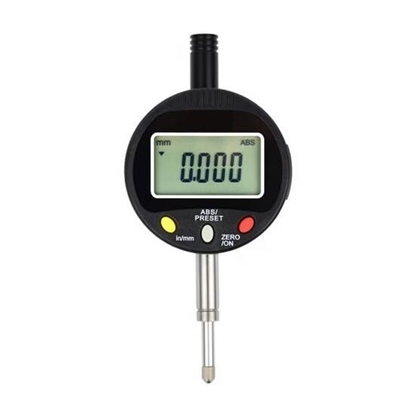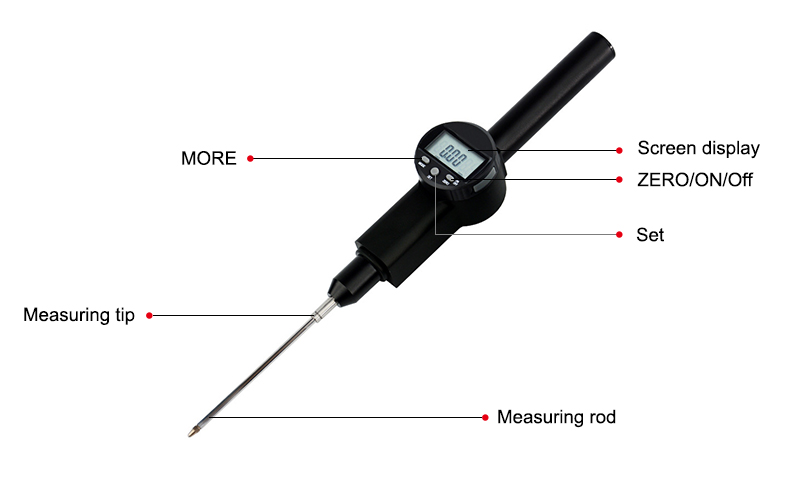What is a Digital Dial Indicator?
In the world of precision measurement and quality control, various tools and instruments play a crucial role. One such tool that has gained prominence in recent years is the digital dial indicator. If you've ever wondered, "What is a digital dial indicator?" or are curious about its applications and advantages, you've come to the right place. In this blog post, we will explore the fundamental aspects of digital dial indicators.
Defining a Digital Dial Indicator
A digital dial indicator is a precision measurement tool designed to provide highly accurate and easy-to-read measurements. It is an advanced version of the traditional dial indicator, enhanced with digital technology. This innovation allows for more precise readings and offers several benefits over its analog counterpart.

How Does a Digital Dial Indicator Work?
At its core, a digital dial indicator functions much like a traditional dial indicator. It consists of a plunger or probe that makes contact with the object being measured. As the plunger moves, it generates mechanical motion that is then converted into an electronic signal. This signal is processed by the indicator's internal electronics and displayed digitally, providing a numerical reading of the measurement. The digital readout eliminates the need for manual interpretation of a dial face, reducing the potential for reading errors.
Digital Dial Indicator Components

A digital dial indicator is a precision measurement tool that consists of several key components, each contributing to its functionality and accuracy. Here are the main components of a digital dial indicator:
- Housing or Body: The housing, often made of metal or plastic, encases the internal components of the digital dial indicator. It provides protection and stability to the instrument.
- Display: The digital dial indicator features a digital display where measurement readings are shown. The display can vary in size and type, with most indicators using LCD (Liquid Crystal Display) screens for easy readability.
- Probe or Plunger: The probe or plunger is the part of the indicator that makes physical contact with the object being measured. It moves in response to changes in the measured dimension.
- Measuring Tip: Located at the end of the probe or plunger, the measuring tip is the point that contacts the object's surface. The shape and material of the tip can vary depending on the specific measurement requirements.
- Mechanical Components: These internal parts include gears, levers, and a mechanical system that translates the movement of the probe or plunger into an electronic signal. This conversion is crucial for generating accurate measurements.
- Electronic Sensor: An electronic sensor detects the mechanical displacement generated by the probe or plunger's movement. It can be an encoder or a transducer designed to convert the mechanical movement into an electronic signal.
- Microcontroller or Processor: The electronic signal from the sensor is processed by a microcontroller or processor within the digital dial indicator. This component is responsible for converting the detected data into a readable format for the display.
- Buttons or Controls: Many digital dial indicators feature buttons or controls on the housing that allow users to zero the indicator, switch between measurement units (e.g., inches or millimeters), or perform other functions.
- Data Output Port: Some digital dial indicators come equipped with data output ports, such as USB or RS-232 ports, for transferring measurement data to external devices like computers or printers.
- Battery Compartment: Digital dial indicators are typically powered by batteries, and the battery compartment is located within the housing. Battery life can vary depending on the indicator's features and usage.
- Zeroing Mechanism: A zeroing mechanism allows users to reset the indicator to zero at any point during measurement. This feature is essential for measuring deviations or differences from a reference point.
- Mounting Features: Many digital dial indicators have mounting features, such as a clamping or magnetic base, to securely attach the indicator to a measurement surface or fixture.
Advantages Over Traditional Dial Indicators
- Digital Readout Accuracy: One of the primary advantages of digital dial indicators is their exceptional accuracy. They can provide measurements with higher precision than analog dial indicators, often displaying measurements to several decimal places.
- Data Recording Capabilities: Digital dial indicators often come equipped with data output options, allowing measurements to be easily recorded, stored, and transferred for analysis or documentation. This feature is especially valuable in quality control and inspection processes.
- Ease of Use: The digital display is user-friendly and eliminates the need to estimate between dial markings. This makes it easier for operators, especially those less experienced in precision measurement, to obtain accurate readings.
Applications of Digital Dial Indicators
Digital dial indicators find applications across various industries, including:
- Manufacturing: Used for quality control, machine setup, and precise measurements in machining processes.
- Automotive: Commonly employed in engine building and assembly to ensure tight tolerances.
- Aerospace: Essential for measuring critical components in aircraft manufacturing.
- Research and Development: Widely used in laboratories for accurate measurements in various experiments and tests.
A digital dial indicator is a precision measurement tool that combines the reliability of traditional dial indicators with the accuracy and convenience of digital technology. Its digital readout, high precision, and data recording capabilities make it an indispensable tool in industries where precision is paramount. Whether you are in manufacturing, automotive, aerospace, or research and development, understanding what a digital dial indicator is and how it works can help you make more informed decisions about measurement tools for your specific needs.

